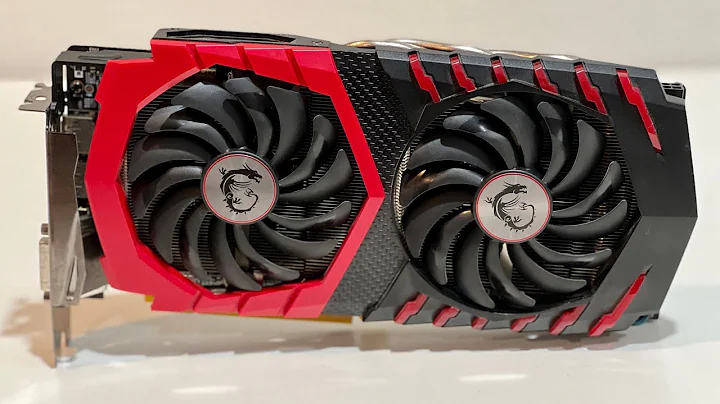Unlocking the Potential of Nvidia Tesla K20x in 2022
Table of Contents
- Introduction
- Nvidia Tesla K20x: A Brief Overview
- Upgrading the Cooling System
- Mining Cryptocurrency with the Tesla K20x
- The Potential of Folding@home
- A Comparison with the GTX Titan
- Conclusion
- FAQs
- Resources
Introduction
In this article, we will delve into the world of the Nvidia Tesla K20x, a powerful graphics card that was once aimed at large enterprises with massive data processing, analytics, and artificial intelligence needs. Despite being outdated by today's standards, this card still holds some potential for certain applications. We will explore its capabilities, how to optimize its performance, and whether it can still be useful in today's computing landscape.
Nvidia Tesla K20x: A Brief Overview
The Nvidia Tesla K20x was introduced back in 2012 and boasted impressive specifications that made it suitable for demanding computational tasks. With its gigantic GK110 processor and 2,688 cores coupled with six gigabytes of DDR5 memory, this card was designed to handle large-Scale data processing and deep learning algorithms. However, its hefty price tag of $7,699 made it inaccessible to most users, resulting in dwindling demand over time.
Upgrading the Cooling System
Before we can utilize the Tesla K20x in a computer setup, addressing its cooling requirements is paramount. Unlike modern graphics cards, the K20x lacks an integrated cooling system. In its original form, it relied on specialized rack cases with powerful fans to dissipate heat efficiently. To tackle this issue, we can modify the card by adding two inexpensive 40-millimeter fans to the plastic shroud. This DIY cooling solution aims to keep the processor temperature below 85 degrees Celsius, preventing any potential overheating issues.
Mining Cryptocurrency with the Tesla K20x
One of the potential applications for the Tesla K20x is cryptocurrency mining. However, due to its outdated Kepler architecture, most mining programs do not support this card. After some research, we discovered Phoenix Miner, which still boasts compatibility with Kepler chips. Surprisingly, the Tesla K20x was able to mine Ethereum, albeit at a significantly slower rate compared to modern graphics cards. With an overclock and 24-hour testing, the K20x returned a mining speed of approximately 2 Megahash for a power draw of 80 Watts. In comparison, a newer RTX 3080 TI card achieves around 85 Megahash. Considering the costs of electricity, using the Tesla K20x for mining cryptocurrency is generally not worth the effort.
The Potential of Folding@home
While cryptocurrency mining might not be the Tesla K20x's strong suit, it excels in scientific workloads. Folding@home is a community-driven project that utilizes distributed computing power to aid in medical research. By running a simple program on our computers, we can contribute unused processing capabilities to create a massive distributed supercomputer. Astonishingly, the Tesla K20x thrives in this scientific workload, delivering around 180,000 points per day without any overclocking. This substantial contribution can assist researchers in studying protein structures and improving drug design. Through Folding@home, the Tesla K20x finds a new purpose and helps accelerate scientific breakthroughs.
A Comparison with the GTX Titan
It is worth mentioning that the Tesla K20x's GK110 Kepler processor is also found in the consumer gaming graphics card, the GTX Titan. The GTX Titan, released shortly after the K20x, offered similar specifications at a fraction of the price. This similarity in architecture meant that companies investing in Tesla K20x cards might have been disappointed by the sudden availability of the cheaper GTX Titan. Despite this, the Kepler chip still performs admirably in gaming scenarios, showcasing its versatility in tackling a range of computational tasks.
Conclusion
In conclusion, the Nvidia Tesla K20x, although outdated, can still prove useful in specific applications. While its value in cryptocurrency mining is limited, it excels in scientific workloads through projects like Folding@home. The addition of a custom cooling solution enables the card to perform optimally and avoid overheating. It is a testament to the engineering prowess of the Kepler architecture that the Tesla K20x remains a capable performer even years after its release.
FAQs
Q: Can the Tesla K20x be used for modern gaming?
A: While the Tesla K20x can technically handle gaming tasks, it is not optimized for that purpose. Modern gaming graphics cards offer superior performance and features specifically designed for gaming.
Q: Are there any other potential applications for the Tesla K20x?
A: Beyond cryptocurrency mining and scientific research, the Tesla K20x could also be used for tasks such as rendering and parallel computing.
Q: How does the Tesla K20x compare to current-generation graphics cards?
A: The Tesla K20x is significantly outdated compared to modern graphics cards. Its performance in terms of gaming and mining is far inferior to newer models like the RTX 3080 TI.
Q: Can the cooling modification be applied to other graphics cards?
A: The cooling modification described in this article is specific to the Nvidia Tesla K20x. Other graphics cards may require different approaches for cooling enhancements.
Resources
 WHY YOU SHOULD CHOOSE TOOLIFY
WHY YOU SHOULD CHOOSE TOOLIFY
































